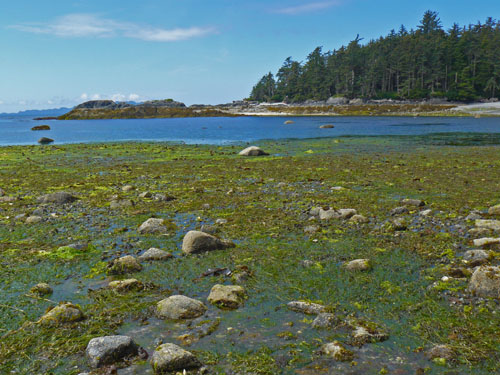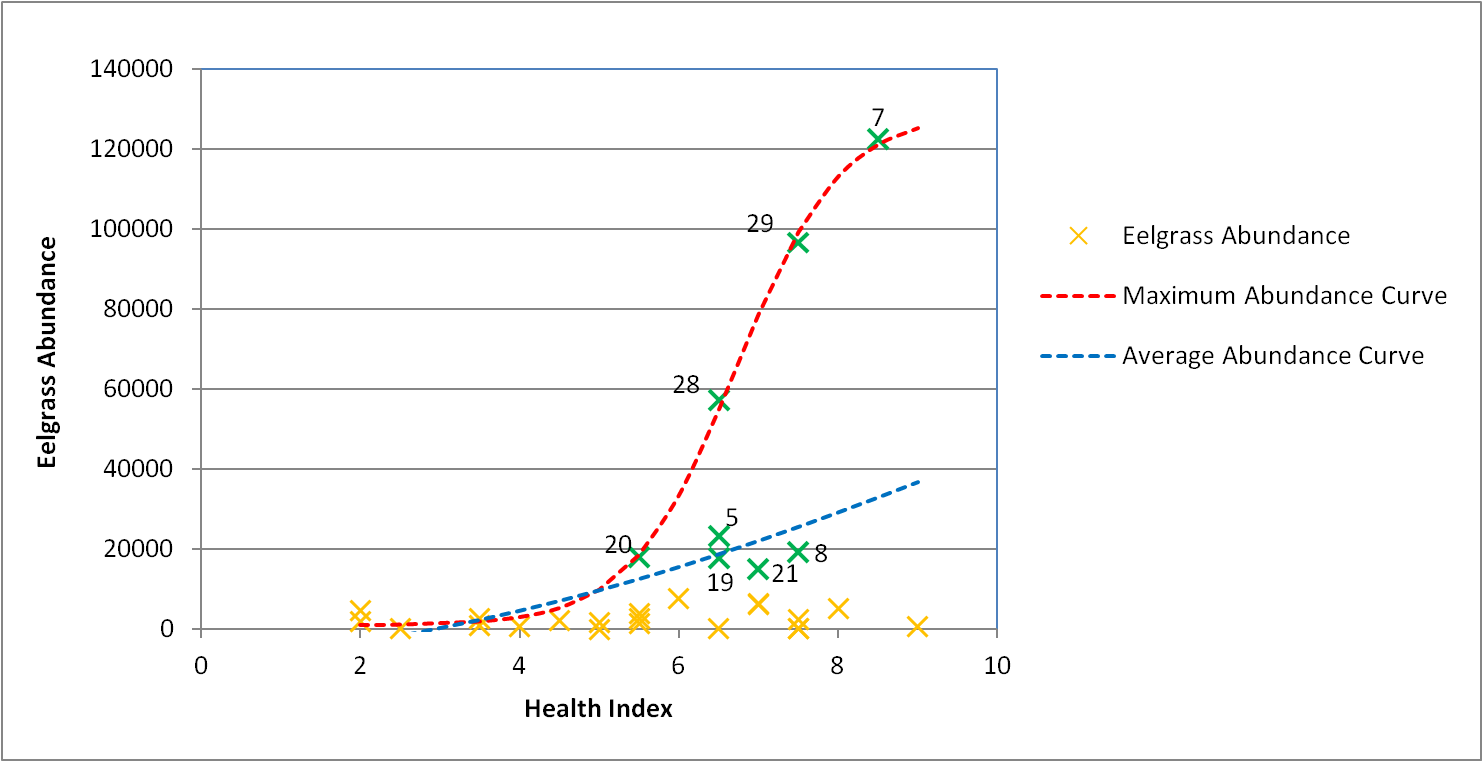Introduction
Generally situated in shallows and along complex shorelines highly valued by recreational users, eelgrass meadows are both ecologically valuable and potentially threatened. They provide rearing habitats for the juvenile stages of many species of fish, foraging habitats for both migratory and resident bird species, and recent research also suggests that eelgrass plays a critical role in carbon sequestration.

However, our understanding of the specifics of their ecological functions, including vulnerability to human activities and climate change, is still limited.

Chatham Sound is situated in the northern part of British Columbia, located between Dundas and Stephens Islands and the Tsimpsean Peninsula near Prince Rupert and bordering on Alaska. As a result of the fresh water discharges of the Nass and Skeena Rivers, the whole of Chatham Sound is essentially a large estuary.

Recent studies at the Lucy Islands found substantial amounts of previously unmapped intertidal and subtidal eelgrass in Chatham Sound.

Clearly, we are still learning about the geographical extent and roles of eelgrass in the Chatham Sound estuary system.
Objectives
The objectives of the Chatham Sound Eelgrass Study were:
- To provide relevant management authorities with high quality data and recommendations regarding eelgrass presence in priority areas on the North Coast of BC.
- To assess the overall abundance and health of subtidal eelgrass in the Chatham Sound estuary region.
- To compare the status of eelgrass beds in the region based on riverine influence, recreational use, and industrial activities.
- To assess temporal changes in eelgrass beds at those sites where data has been collected previously.
- To provide baseline data for subtidal eelgrass beds in regions where the British Columbia Marine Conservation Analysis has indicated that eelgrass is a priority habitat.
- To provide data for the future development of an oceanographic model relating changes in riverine sediment deposition resulting from global climate change with eelgrass bed health.
Study Design
Benthic video footage was collected on subtidal eelgrass at 29 sites throughout the Chatham Sound region. The eelgrass beds that were studied during this project were chosen to be representative of a variety of locations and conditions throughout Chatham Sound. They do not necessarily include the healthiest, largest, or most vulnerable eelgrass beds in the region. There are many other eelgrass beds in Chatham Sound that were not surveyed.

Study Conclusions
While the analysis of this data brought many surprises, and probably generated as many new questions as it answered old ones, a few of the important conclusions are as follows:
-
- The presence of intertidal eelgrass is not an absolute indicator of the presence of subtidal eelgrass.
- Aerial surveys using the standard visible spectrum for photography and video do not adequately assess the abundance of subtidal eelgrass. Therefore, the Shorezone data set does not provide a reliable estimate of total eelgrass on the North Coast.
- A diverse range of fish and invertebrates, including commercial species such as rockfish and Dungeness crab, were observed utilizing the eelgrass beds. The value of eelgrass habitat to these species should be a topic for further research.

-
- Chatham Sound is dominated by rocky intertidal habitats. Only about 14% of the coast in the study area is classified as a shore type where eelgrass might be expected. Much of the coastline within that 14% may be unsuitable habitat for eelgrass for a number of other reasons.
- Large amounts of unmapped intertidal eelgrass were observed in some locations. This suggests that our knowledge of the geographical extents of intertidal eelgrass in Chatham Sound is limited. More effort needs to be expended on mapping intertidal eelgrass in the Chatham Sound region.

-
- Subtidal eelgrass varied widely in terms of its health and abundance.


-
- Each eelgrass bed was unique, with variations in substrates, ecotypes, associated flora and fauna, and tolerance to turbidity, wave action, and tidal currents.
- North Coast eelgrass prefers a greater degree of wave exposure and a larger average substrate particle size than that observed in previous studies of more southern eelgrass.

-
- A qualitative health index was calculated for each of the eelgrass study sites. This index involved factors such as turbidity, presence or absence of local freshwater, salinity, current velocity, wave exposure, sedimentation, cumulative sewage impact, substrate particle size, and bottom topography. The health index was able to estimate the maximum eelgrass abundance that could be expected at a given site; however, many eelgrass beds do not appear to be at or near their maximum abundance.


The graph above shows eelgrass abundance versus its calculated health index. Sites with the greatest eelgrass abundance are found on the red dotted line in the graph. This line indicates the maximum eelgrass abundance that could be expected at a site given its particular health index value. The majority of the study sites have abundance values which fall below the red line. A second line on the graph (dotted blue line) shows where the average abundance values for the sites should lie. Note that 21 sites (shown with yellow markers) fall well below even an average abundance value.
-
- Collection of new quantitative data on the Skeena/Nass estuary system, particularly for turbidity, salinity, and nitrate, is necessary to improve our ability to determine the health of a site.
- The development of an oceanographic model for the Chatham Sound region would greatly improve our abilities to assess the factors affecting eelgrass at a particular site, and to predict future changes in these factors
- Further study into factors, such as herbivory, bioturbation, pathogens, oxygen depletion, and temperature, which may be limiting eelgrass growth is necessary.
- Given the number of eelgrass beds which seem to be growing at less than optimum rates, and our current inability to explain what factors may be limiting their growth, the use of the precautionary approach when managing eelgrass habitat would be strongly suggested.
- Some eelgrass beds exist in less than ideal environmental conditions, and this is reflected by their very low abundance values. These beds should not be considered “expendable”. In times of changing climate conditions, these beds may serve as sources of seeds and material for vegetative propagation to sites with more favorable environmental conditions. Alternatively, large changes in the environment may favor these beds, and they may begin to thrive in the future.

- Short term seasonal changes in eelgrass abundance are generally larger than long term changes over a period of several years.
- If long term baseline data are to be collected at a particular eelgrass site, it is very important that the site be surveyed along the same transect line, at the same tidal elevation, and during the same time of year. Failure to do this will lead to inconclusive results regarding long terms trends in the health and abundance of the eelgrass bed.
See the link for the full Chatham Sound Eelgrass Study report.

